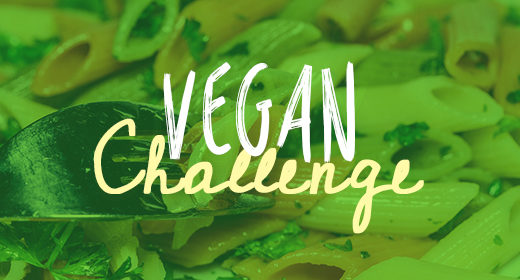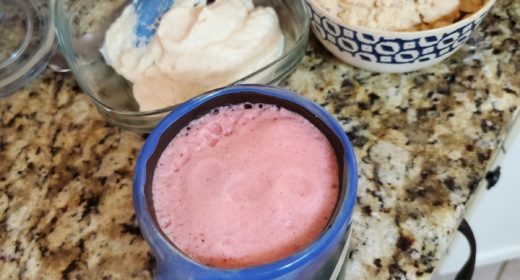AYURVEDA for WEIGHT LOSS
Hi,
Below is a translation from a Diploma Work of one of my Yoga Students. I used Google translate so if the text is not perfect here and there please bare with me. I fixed a lot of the errors so it is quite understandable.
I have my own strong views on ayurveda and how it fits into a raw or vegan paradigm.
Shall we dive into the diploma work?
“Ayurvedic methods to maintain slim figure
Still, even in the tradition of Ayurveda, it is believed that it is better to be thin than too
overweight because, often it is easier to increase body weight than decrease it. And a heavy body creates
conditions for the accumulation of AMA – toxins which reduces life expectancy.
Another important aspect is not the impact on the outer appearance as much as the location of the adipose tissue around
of the internal organs impacting the internal health. This means that the vital organs like heart, liver, and kidneys are
trapped in fat, which increases the burden for their work. (se tissue /ˈædɪˌpoʊs/ ( listen), body fat, or simply fat is a loose connective tissuecomposed mostly of adipocytes.[1] In addition to adipocytes, adipose tissue contains the stromal vascular fraction (SVF) of cells including preadipocytes, fibroblasts, vascular endothelial cells and a variety of immune cells such as adipose tissue macrophages. Adipose tissue is derived from preadipocytes. Its main role is to store energy in the form of lipids, although it also cushions and insulates the body. Far from being hormonally inert, adipose tissue has, in recent years, been recognized as a major endocrine organ,[2] as it produces hormones such as leptin, estrogen, resistin, and the cytokine TNFα. The two types of adipose tissue are white adipose tissue (WAT), which stores energy, and brown adipose tissue (BAT), which generates body heat. The formation of adipose tissue appears to be controlled in part by the adipose gene. Adipose tissue – more specifically brown adipose tissue – was first identified by the Swiss naturalist Conrad Gessner in 1551.[3])
listen), body fat, or simply fat is a loose connective tissuecomposed mostly of adipocytes.[1] In addition to adipocytes, adipose tissue contains the stromal vascular fraction (SVF) of cells including preadipocytes, fibroblasts, vascular endothelial cells and a variety of immune cells such as adipose tissue macrophages. Adipose tissue is derived from preadipocytes. Its main role is to store energy in the form of lipids, although it also cushions and insulates the body. Far from being hormonally inert, adipose tissue has, in recent years, been recognized as a major endocrine organ,[2] as it produces hormones such as leptin, estrogen, resistin, and the cytokine TNFα. The two types of adipose tissue are white adipose tissue (WAT), which stores energy, and brown adipose tissue (BAT), which generates body heat. The formation of adipose tissue appears to be controlled in part by the adipose gene. Adipose tissue – more specifically brown adipose tissue – was first identified by the Swiss naturalist Conrad Gessner in 1551.[3])
Visceral fat or abdominal fat[8] (also known as organ fat or intra-abdominal fat) is located inside the abdominal cavity, packed between the organs (stomach, liver, intestines, kidneys, etc.). Visceral fat is different from subcutaneous fat underneath the skin, and intramuscular fat interspersed in skeletal muscles. Fat in the lower body, as in thighs and buttocks, is subcutaneous and is not consistently spaced tissue, whereas fat in the abdomen is mostly visceral and semi-fluid.[9
Men are more likely to have fat stored in the abdomen due to sex hormone differences. Female sex hormone causes fat to be stored in the buttocks, thighs, and hips in women.[18][19] When women reach menopause and the estrogen produced by the ovaries declines, fat migrates from the buttocks, hips and thighs to the waist;[20] later fat is stored in the abdomen.[21]
High-intensity exercise is one way to effectively reduce total abdominal fat.[22][23] One study suggests at least 10 MET-hours per week of aerobic exercise is required for visceral fat reduction.[24]
Extra fat in our
muscle makes the body less agile.
Ayurveda maintains that illness arises when there is no harmony between
man and the Whole. Disrupting the natural rhythms of life, people included in dissonance with the
Natural Law, and it activates destructive processes in the body that
cause disease and premature aging. Therefore, the basis of maintaining an ideal
health is living in harmony with the rhythms of Nature. When this occurs, the body
itself sparks powerful processes of rejuvenation.
The maintenance of health and cure of diseases is based on the idea of balance between
the three bodily constitutions (Doshas): Vata, Pitta and Kapha. In contrast to the modern
medicine, Ayurveda uses a holistic, i.e. a holistic approach to treatment, not
focusing on individual symptoms. In other words, bringing the whole body into
balance and harmony, a natural way to get rid of the disease, creating
the imbalance in the body. But this applies not only to diseases as such, but also, for example,
excess weight — by following the simple principles of the science of Ayurveda, you can
bring your weight to normal.
The problem of excess weight cannot be decided by some one for all universal
way one diet. Each person requires a customized solution. According to
Ayurveda, fat is not something extra for the body, it performs quite
a specific function. First and foremost, it is the lubricant of muscles and tendons. But when it
is in excess one may experience increased attachment, greed is a psychological
problems of high Kapha.
An important rule for a person seeking to restore a healthy metabolism,
should be the ability to choose the most suitable diet for each day. It
will prevent the accumulation of AMA and to maintain a normal level
digestive fire Agni. You should also drink plenty of clean water, which
helps eliminate toxins, cleansing the lymph, involved in the digestive system,
The lack of water in the body causes dryness and provokes
the increase in mucus that leads to disruption of normal microflora,
reproduction of bad bacteria, the formation of toxins. To improve Agni in Ayurveda they
widely use spices, which greatly increase the ability
of the body to assimilate foods.
It is important to consider the concept of biological time in Ayurveda when eating. We
can see that in different times of the year in an atmosphere dominated by different elements,
and accordingly, a doji in the body. Similarly, the activity of the doshas and different systems
the body is replaced cyclically, not only depending on the season, but also during the day
every 4 hours.
Biological time:
from 6 to 9 am Kapha
from 10 to 14 hours pitt
from 14 to 18 vatta
from 18 to 22 hours Kapha
from 22 to 2 o’clock pitts
from 2 to 6 hours Vatts
In the period of activity of each dosha our body will digest those foods which
fuel system and organs related to this dosha. For example, from 6 am to 10 am
the body without any problems learns sweet. The sweet taste reflects the elements Earth and Water. It is these elements that characterize
Kapha dosha which is active at that time. Accordingly, in this case, the body will not accumulate the extra “slime”.
Since the digestive fire is weak, a light Breakfast is recommended. People with
physiology of Kapha type, people with the problem of excess weight, obese and
swelling, with a slow metabolism, it is best to skip Breakfast because
morning meal will increase Kapha in the body which will lead the accumulation of
water and mucus.
In the afternoon, in the midst of activity Pitta and digestive fire, must be a primary
meal. In this case, the food is well digested and AMA (toxins) do not accumulate. And
the evening, activity time, VATTA, better to eat easily digestible food that
quickly digested and will not lead to the accumulation of excess body fat. At night
heavy food is by far the worst, food is not only not absorbed but also will rot in the gut, poisoning
body.
Obesity is associated with a weakening or slowing of the metabolism often
accompanied by weakness of digestive fire
Periods of special activity of the digestive fire in the stomach (the quantity and composition of food
it makes sense to pick up, given the strength of the digestive fire at a given time
days):
Intermittent fasting – helps with detox, increased digestive fire, removal of AMA, increased energy and hormonal balancing if done correctly.
1. morning 7:00 – 9:00 a moderate heat
2. noon 10:00 – 13:00 the most active Fire
3. day 15:30 – 16:30 low heat
4. evening 17:00 – 19:00 a moderate heat
We should also pay attention to the effect associated with certain tastes.
According to Ayurveda, the bitter taste improves metabolism and helps cleanse the
the body, also contributes to the digestion of sugar and fat, reduces cravings for sweets.
It is believed that foods with bitter taste, we use below the norm (in contrast to
sweet) — so that their number can be increased (the bitter taste contained in the various
leafy vegetables). (cleaning the liver- bitter)
Pungent taste stimulates digestion, promotes perspiration — i.e., the reduction
adipose tissue. To spicy food some people tend to get used to — sometimes to the detriment of their
body. In any case, spicy and bitter can help in losing weight, but the extent to which their
can be used — depends on the individual Constitution.
Depending on the predominance of a particular dosha for weight loss will be helpful
for the following:
• People having Vata Constitution, it is likely you will just need to follow a diet
to balance your dosha, reducing the amount of fat. The basic taste is sweet, sour and salty. You should avoid pure
sugar — better to eat complex carbohydrates. You can add a little spicy, a little
a little bitter. Suitable spices: milder types such as coriander, fennel, cardamom, and
here black and red pepper to get involved is not necessary. Deprivation is usually not
recommended. People of Vata type have to pay attention to their psychological
condition — if there is a need to calm the nervous system, it is possible
to use, for example, Valerian or nutmeg. In General, VATTA should not be strongly excited by an idea- they shoudnt get stressed out about weight loss.
• Representatives of the Pitta type – balance Pitta diet.
Tastes — sweet, bitter and astringent. Therefore spicy food in this case is not suitable. Very healthy salads from fresh
vegetables, especially leafy. Suitable spice- turmeric. You can also take
bitter herbs (the barberry, dandelion, gentian). Bath or sauna pitta not recommended due to the fact that this dosha is hot. However,mild variations are OK. Pitta can try
to FAST. With regard to the prerequisites to excess weight from Pitta, it is usually overeating,
which occurs in the power of good appetite. Getting rid of such habits and
dependencies helps.
• People with Kapha Constitution. It is important to establish the digestive fire — this is usually a problem for Kapha types. Sharp and bitter tastes, along with the astringent. Spices — red and
black pepper, ginger, turmeric. Good Barberis — it eliminates excess fat tissue and
helps in its renewal. Diet to reduce Kapha has to be very strict — eliminate fats from dairy products (drinking milk), meat, sweet
(including sweet fruits AK – I would say dry fruit). Helpful sprouted grains. Vegetables are best steamed.
You should drink hot water (with honey and lemon juice — when there is a feeling
hunger) or hot herbal teas. Usually shown starvation, intense physical
exercises, sauna. It is useful to wash the nose out with saline. Recommended
heating forms of pranayama (for example, bhastrika or breath of the right nostril). Kapha
contraindicated-a long night of sleep, day sleep does not follow.
If the question of weight loss is not acute, it is better to solve it in a warm time of the year
in the spring and summer. When the weather is cold VATTA dosha increases. So it is better to work with the seasons. If it is cold VATTA INCREASES. Weight loss is the decrease of KAPHA and increase of VATTA. So following nature is best. “
—
Ali Kamenova,
Founder of Interval Yoga.
Related Posts:
1 Comment
Leave a Reply to giorgiamiguel Cancel reply
You must be logged in to post a comment.










hi Ali!! so good post! thank you! lot of importants informatons…i’ve a question: how can i discover my ”ayurveda constitution”? lo of love to you, thank for all